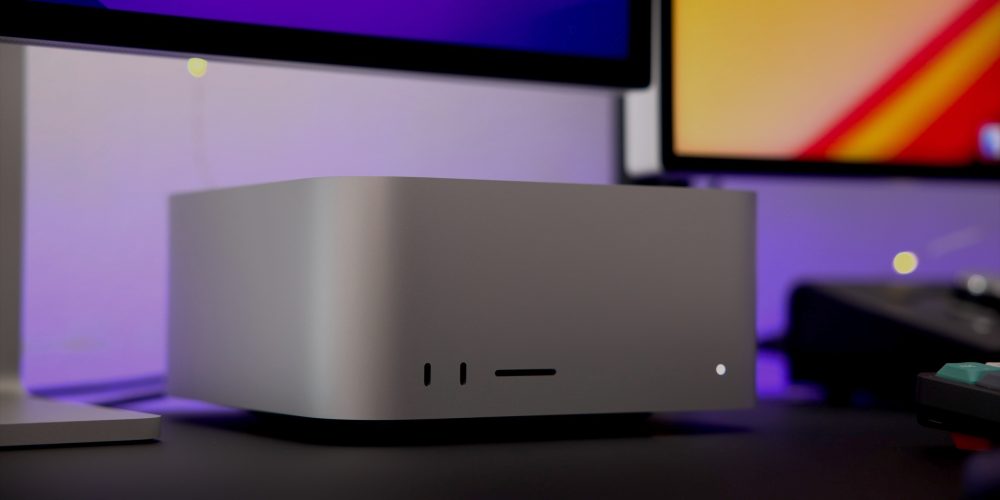
Apple announced its plans to transition the Mac from Intel to Apple Silicon processors on June 22, 2020. At the time, the company said it would “ship the first Mac” with Apple Silicon by the end of 2020 and “complete the transition in about two years.” That two-year road map has passed, and Apple hasn’t completed the transition quite yet. Here’s what we’re still waiting on.
The Apple Silicon transition timeline
There’s always been a debate over when exactly Apple initially planned to finish the Apple Silicon transition. Some people viewed the initial announcement at WWDC 2020 as the start of the transition. In this scenario, the company would have ideally been able to complete the transition by June 2022.
On the other hand, some people argued that the Apple Silicon transition process officially started when the first M1 Macs were announced. The M1 chip was officially unveiled on November 10, 2020. At the same time, Apple announced new versions of the MacBook Air, MacBook Pro, and Mac mini with the M1 chip inside.
If you view the November announcement as the start of the transition process, Apple would have needed to have everything wrapped up by November 2022. This deadline, too, has passed. This means Apple has missed its two-year transition target regardless of which deadline you consider.
What are we still waiting for?

But with all of that being said, Apple has done an excellent job of switching the overwhelming majority of its Macs to Apple Silicon within the last two years. Some machines, such as the MacBook Air have not only transitioned to Apple Silicon but have also been upgraded to newer Apple Silicon chips in that same window.
Meanwhile, products like the MacBook Pro have undergone complete redesigns thanks to the advent of Apple Silicon. The new 14-inch and 16-inch MacBook Pro models powered by the M1 Pro and M1 Max chips not only feature significantly improved performance compared to their Intel predecessors, but they also feature all-new designs with more ports, improved displays, and more.
The M2 variant of the MacBook Air packs a complete redesign that completely abandons the previous wedge-shaped form factor. The 24-inch iMac with M1 inside is also an all-new design with an impressively-thin form factor.
And of course, there’s the Mac Studio. The Mac Studio is an all-new product for Apple, representing a rare new entry into the Mac lineup. It coexists alongside the Mac mini as a more powerful option with expanded connectivity, and for many people, it’s filled the void left by the lack of a Mac Pro powered by Apple Silicon.

So that leaves us where we are today. You have Apple Silicon options for every product category in the Mac lineup, with the exception of the Mac Pro. During its March event, Apple exec John Ternus teased that the Mac Pro with Apple Silicon was an announcement “for another day.” That day, however, hasn’t yet come.
When unveiled, the Mac Pro with Apple Silicon is expected to offer incredibly impressive performance. Rumors are that configuration options will include 24 and 48 CPU cores and 76 and 152 graphics cores. You’ll also reportedly be able to configure the machine with up as much as 192GB of unified memory.
While the Apple Silicon Mac Pro was rumored for 2022, and perhaps even initially planned for a 2022 release, we’re now expecting it sometime in early 2023.
There are a couple of areas of interest in the Mac lineup right now. There’s no big-screen iMac powered by Apple Silicon, and Apple also isn’t selling the old Intel-powered big-screen iMac. Instead, your only iMac option is the 24-inch iMac with the M1 chip inside.
Interestingly, Apple also continues to sell a version of the Mac mini with Intel inside. This machine is likely to be discontinued at some point in the near future, but it’s likely still a popular option for some enterprise buyers.
9to5Mac’s Take

Apple missed its two-year target for completing the Apple Silicon, but does it really matter? No, it doesn’t. What we’ve seen for the Apple Silicon transition so far has been nothing short of impressive, and the transition shouldn’t be viewed as a “failure” because of one of the lack of an Apple Silicon Mac Pro.
I think it’s also important to zoom out and look at the big picture. The Apple Silicon transition was announced in June 2020, just a few months into the COVID-19 pandemic. Since then, Apple’s supply chain has experienced numerous disruptions that undoubtedly impacted the Apple Silicon transition.
When supply and production are constrained, Apple has to make decisions about which Macs it prioritizes. The Mac Pro is undoubtedly at the bottom of the totem poll. While it’s the most powerful Mac in Apple’s lineup, it’s also niche in comparison to things like the MacBook Air and MacBook Pro. If forced to choose, Apple is always going to choose the MacBook Air and MacBook Pro over the Mac Pro.
Top comment by Olaf Gr
That missed deadline is no biggie. There is however a void in the lineup. As mentioned the large screen iMac and the MacPro, two models I've been looking out to eagerly...
Apple Silicon also powers all of Apple’s products. While the processors all have different names, they also all share many of the same technologies inside. This means Apple has to not only choose which Macs to prioritize but also factor in the silicon demand for the iPhone. And the iPhone is king.
What do you think? Is it a problem that the Mac Pro is still available only with Intel chips inside? Let us know down in the comments.
Follow Chance: Twitter, Instagram, and Mastodon
FTC: We use income earning auto affiliate links. More.


Comments